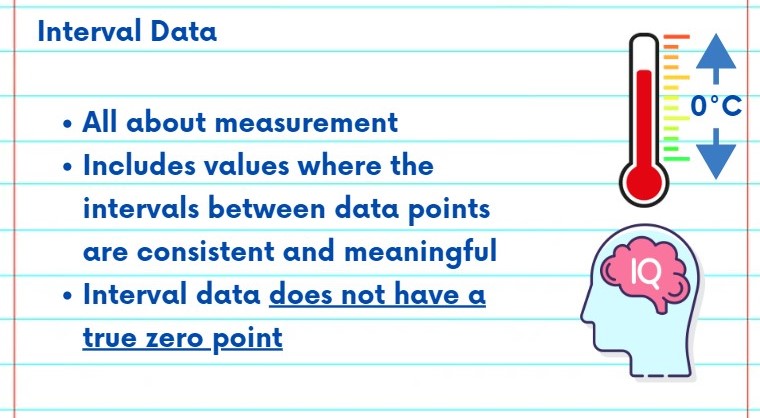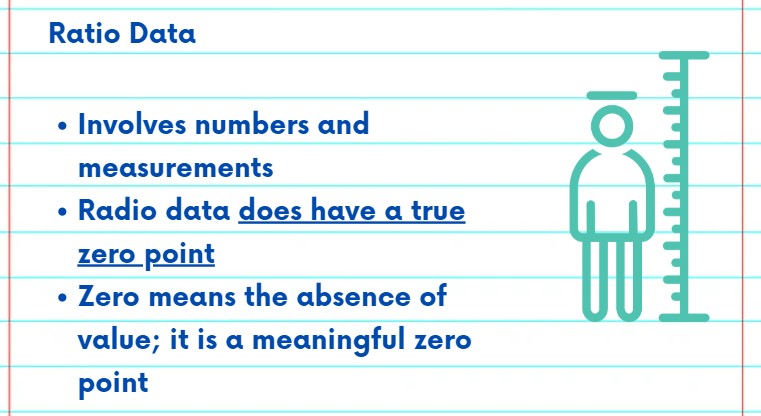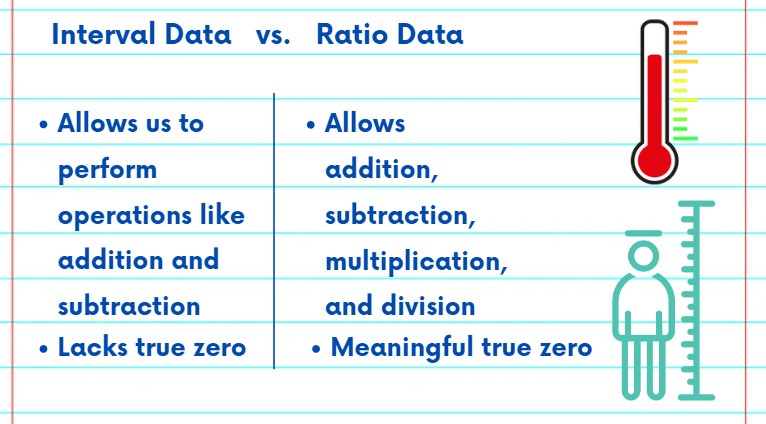This NSDC Data Science Flashcards series will teach you about the different kinds of data, including how you can use them to strengthen your research. This installment of the NSDC Data Science Flashcards series was created by Varalika Mahajan. Recordings were done by Sneha Dahiya. You can find these videos on the NEBDHub Youtube channel.
In this segment, we’re going to explore two important types of quantitative data: interval and ratio data.

Let’s start with interval data. This type of data is all about measurement, but it has some unique characteristics.
Interval data includes values where the intervals between data points are consistent and meaningful. Think of temperature in Celsius or IQ scores.
However, here’s the crucial point: interval data doesn’t have a true zero point. In the case of Celsius, a temperature of 0°C doesn’t mean the absence of temperature; it’s just a specific point on the scale.

Now, let’s move on to Ratio Data.
Ratio data, like interval data, involves numbers and measurements. But the key difference is that ratio data has a true zero point.
For example, when we measure height, a value of 0 means the absence of height—it’s a meaningful zero point.
Let’s compare these two. Interval data allows us to perform operations like addition and subtraction. For instance, we can say that 20°C is 10°C warmer than 10°C.”
Ratio data goes a step further. We can not only add and subtract but also multiply and divide. For instance, we can say that someone who is 180 cm tall is twice as tall as someone who is 90 cm tall.
This makes ratio data incredibly versatile. We can calculate meaningful ratios and percentages and perform more advanced statistical analysis.

In summary, interval data has consistent intervals but lacks a true zero point, while ratio data has both consistent intervals and a meaningful zero point.
So that is all for today. Thank you all for watching and follow along with the rest of the NSDC video series to learn more.
Please follow along with the rest of the NSDC Data Science Flashcard series to learn more about data science ethics.
